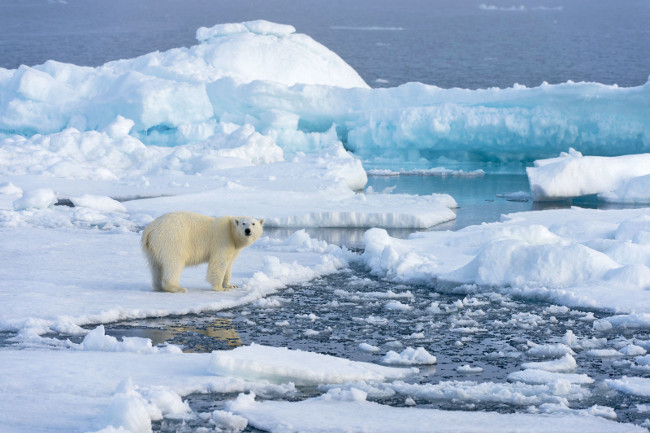Acid in the Arctic Ocean increases rapidly with climate change
Climate change not only causes temperatures in the Arctic Ocean to rise, but many ice shelves are cracked, but a series of acidic levels in this sea have increased significantly over time. Currently the information is shaking up the global scientific community.
Accordingly, international scientists said that in the Arctic Ocean region significantly increased acidity levels from 1994 to 2010, mainly from the amount of carbon in the greenhouse gas dissolved in water. Not only in the Arctic Ocean, but many other seas also have a similar situation. This poses a serious concern threatening polar bears as well as other marine organisms that depend entirely on the ocean.
 Acid in the Arctic Ocean increases rapidly with climate change Picture 1
Acid in the Arctic Ocean increases rapidly with climate change Picture 1
But most worrisome, international scientists have looked at the concentration of aragonite in the Arctic Ocean (this is an extremely high acidic mineral water) and measured in the North West North Sea. Ice Ocean has a lower concentration of aragonite than the rest.
However, not only the climate change factor, but also the oceanic acid-rich ocean currents, which flow through the Arctic region, are then trapped and extremely acidic. .
Many environmental science experts predict that if this acidity is increasing in concentration and the risk of global climate change is stronger, it is likely that the Arctic Ocean's summer from 2030 onwards will It is no longer melting but on the contrary it will freeze strongly, large-scale. If this really happens the existence of ecosystems, the Arctic creature will be threatened and even at risk of disappearing.
You should read it
- Robot Boys help measure the impact of climate change
- Climate change is causing the sea to flow faster, scientists are still confused about what the harm will be
- The surprising relationship between climate change - birth rate and consequences
- Global warming is killing intestinal bacteria in lizards
- Found shelter for corals threatened by global warming
- NASA announces 3D model of El Nino phenomenon
- Look for evidence of climate change in Antarctica with an iPhone
- Coral reefs are threatened by ocean acidification, which can disintegrate before 2100
- Global warming can weaken wind power, a study predicts
- What is left of Asia if the whole ice on Earth melts?
- Climate change puts bees at risk of extinction, but it's not too late for humanity to save them and save themselves
- Fish are encroaching on the sea kelp species




 Climate change is causing the sea to flow faster, scientists are still confused about what the harm will be
Climate change is causing the sea to flow faster, scientists are still confused about what the harm will be Robot Boys help measure the impact of climate change
Robot Boys help measure the impact of climate change Found shelter for corals threatened by global warming
Found shelter for corals threatened by global warming Coral reefs are threatened by ocean acidification, which can disintegrate before 2100
Coral reefs are threatened by ocean acidification, which can disintegrate before 2100 Fish are encroaching on the sea kelp species
Fish are encroaching on the sea kelp species Ocean acidification changes California's shell structure
Ocean acidification changes California's shell structure